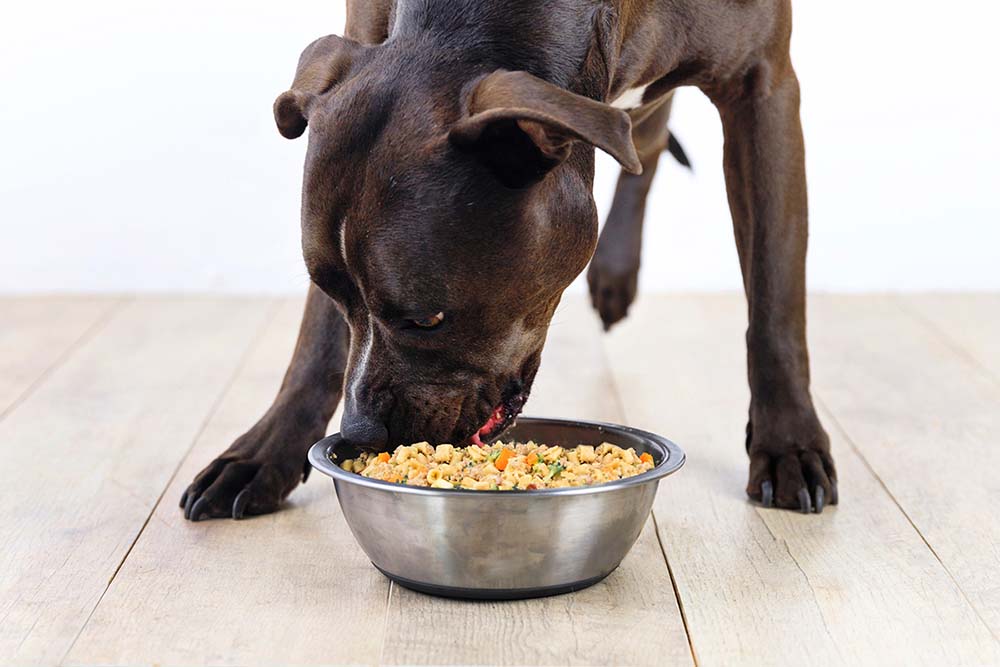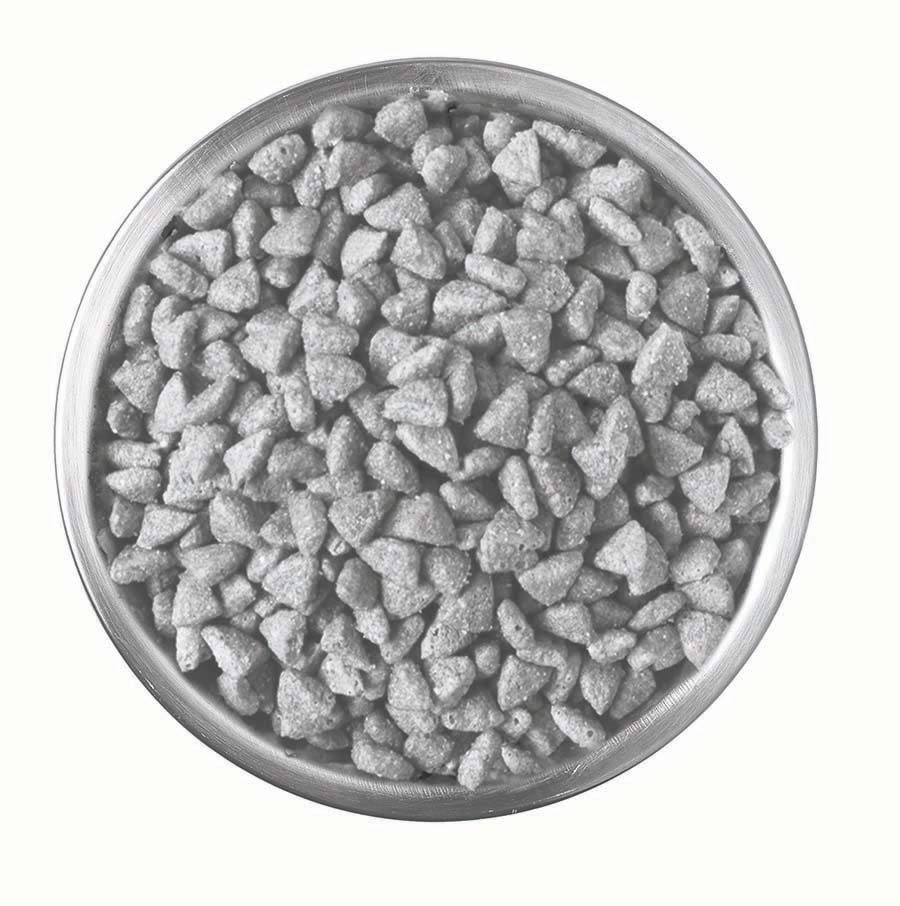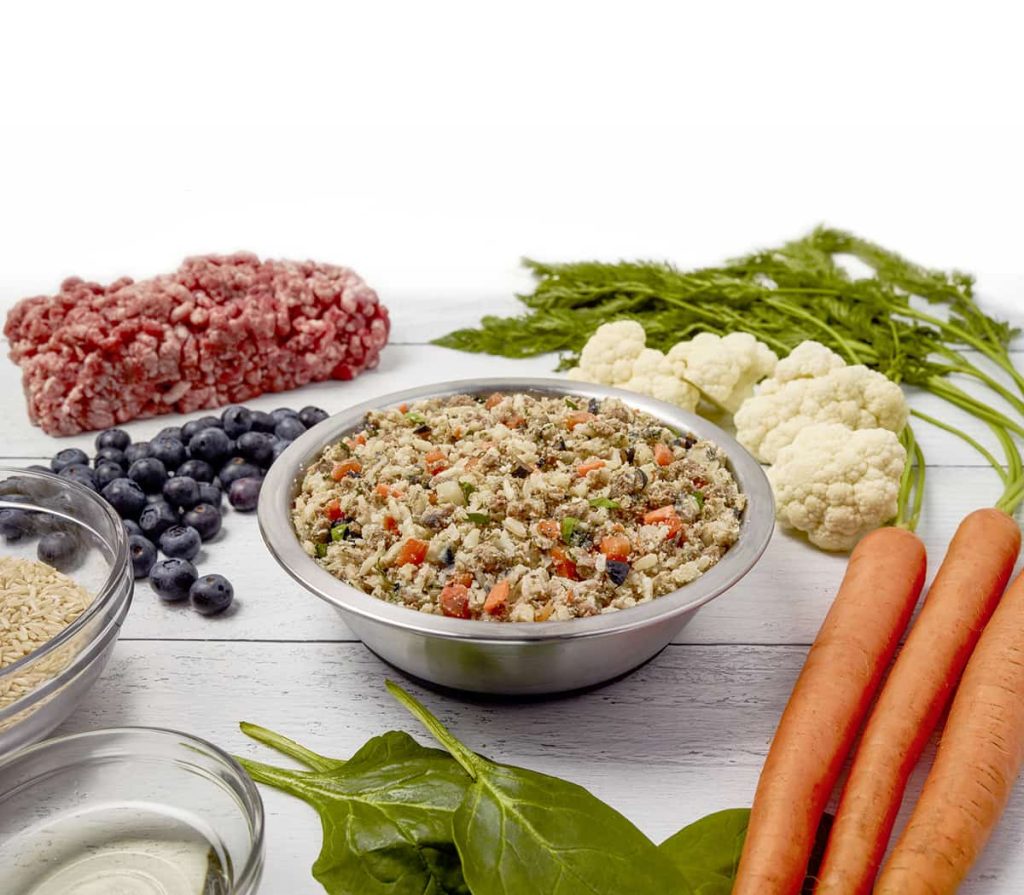Pet food marketing is right up with there with general “wellness” or “all natural.” It’s confusing. What do these terms mean?
- When you hear human-grade dog food, what do you think?
- Is feed grade bad for your dog or cat?
- What is “feed grade?”
- Is there FDA oversight of pet food safety?
- What do high-quality ingredients mean, and what should you feed your pet anyway?
To answer these questions and more, let’s explore this corner of the wild and woolly world of pet food land.
Let’s start with a distinction of human grade dog food vs. feed grade.
What is human-grade pet food?

When you think of the foods you eat, you probably realize there’s some sort of oversight of them. Even if you grow the fruits and vegetables yourself, the U.S. Department of Agriculture (USDA) approves the seeds and seedlings.
By the time the ingredients appear on the shelves at our grocery store or local farmer’s market, they’ve met the requirements for human consumption.
In conjunction with the USDA, the Food and Drug Administration (FDA) regulates human food production. They regulate quality control, safety, and nutritional value. There are even regulations around the manufacturing facilities.
You can probably guess there’s a difference between animal feed manufacturing facilities and human food facilities. Traditionally, animal feed production facilities aren’t held to the same standards of cleanliness or ingredients as human food production. More on that in a moment.
Human-grade pet food claims mean the pet food industry has adopted the same levels of scrutiny for dog or cat food. Pet food manufacturers have their own federal regulation known as The Association of American Feed Control Officials (AAFCO).
This entity developed standard guidelines for human-grade pet food. In it, the definition states “that every ingredient and the resulting product must be stored, handled, processed, and transported in a manner that is consistent and compliant with 21 CFR part 117 and all other applicable federal human food law as required by ingredient, process and/or facility type.”
In plain English, each ingredient, processing step, and facility must meet “human grade” requirements. Pet food manufacturers who slap the human-grade label on their bags must meet the standards of human food-grade ingredients and processing facilities.
This is a relatively new practice. Traditionally, animal food brands used feed-grade ingredients and processed pet food products in facilities that processed livestock feed. But as the pet food industry has matured, they’ve recognized pet parents want the most nutritious options for their furry family members. It’s kind of funny, we’re going back to the ways our great-grandparents fed animals – with human food. No wonder! It’s more nutritious.
For context, let’s look at feed-grade dog food.
What is feed-grade pet food?

Unlike high-quality, human-grade ingredients, traditional kibble or dry dog food is highly processed, and most contain more fillers and less nutritious foods than most pet parents would like.
Take the term “feed grade.” It refers to foods that the FDA and AAFCO deem safe for animal feed but people wouldn’t eat.
There is some nutritious value in these practices.
For example, in the world of big pet food companies, some dog food brands take chicken bones and process them into pet food. When you think about how a chicken undergoes the machine separation process before being packaged into breasts, thighs, etc, for our kitchens, you can imagine there’s a lot of meat left on those bones.
By grinding the bones, that leftover chicken meat goes into your pet’s food. Likewise, chicken necks and feet may find their way into feed-grade pet food.
By-products
If you’re reading the dog food label, you might pause at byproducts. Are byproducts bad? Natural? Are they considered a filler at best?
The AAFCO describes byproducts as “Secondary products produced in addition to the principal product.” What does that mean? When you do some more digging, it turns out that things like feathers and organ meats fall into this category. Think liver and kidneys. While organ meats may not grace your table these days, your great-grandparents might have eaten kidney pie or liver and onions. Such dishes were mainstays of homestyle meals a few decades ago.
While byproducts have a less savory sound, that doesn’t mean they’re all bad. There can be some nutritional value there.
Then there are much less savory ingredients too, such as dead on arrival (DOA) animals. Or diseased animals from the slaughterhouse. These are not quality ingredients and don’t fall into the category of edible foods. Yet, they can end up in some feed-grade kibble brands.
Human Grade Is Quality Ingredients in Dog Food

There’s regulation at every turn in the supply chain, from the farmers to the processing to the packaging, the sales, and even to how you store the food.
As a quality control mechanism, such regulation also prevents diseased or dead on-arrival animals from ending up in the human food supply chain.
Additionally, human-grade pet food must adhere to human-grade processing standards of cleanliness and safety protocols. Even the facilities are different to make following such regulations easier.
Human-grade pet food follows all the same regulations as human food for humans. Plus, if it’s fresh, it has more nutritional value than kibble.
What’s the Nutritional Value of Your Pet’s Food?
Nutrition is the foundation for a healthy life. A balanced diet contributes to a longer, healthier life. While nutrition is individual, human-grade, fresh dog food usually has higher-quality proteins, omega-3 fatty acids, and the right mix of vitamins and minerals for dogs of different ages and activity levels. You can add high-quality dog treats and supplements for joint support and other health concerns if your veterinarian recommends them
The right nutrition can help clear up dog allergies, improve joint mobility, and generally put more pep in your pup’s step.
Safety and Transparency
Every pet parent wants to feed their dog and cat healthy and safe food they can feel good about. Safe ingredients and transparency about those ingredients and how they’re turned into a healthy and satisfying meal for your pup is part of our mission. We’re on a mission to transform the lives of pets through transparency and evidence-based nutrition.
As a concerned pet parent, you want to differentiate between dog food brands. Now that you better understand human-grade claims on dog food, you can recognize high-quality ingredients and choose a balanced diet for your pup. Your pup will love fresh, human-grade dog food that meets their nutritional needs.
This content is for informational use only and does not replace professional nutrition and/or medical advice, diagnosis, or treatment. It is not a substitute for and should not be relied upon for specific nutrition and/or medical recommendations. Please talk with your veterinarian about any questions or concerns.
